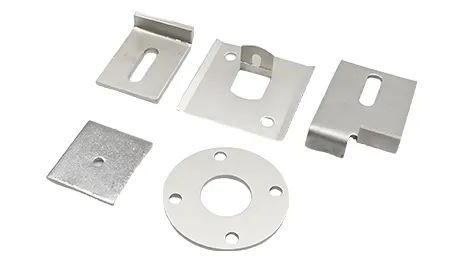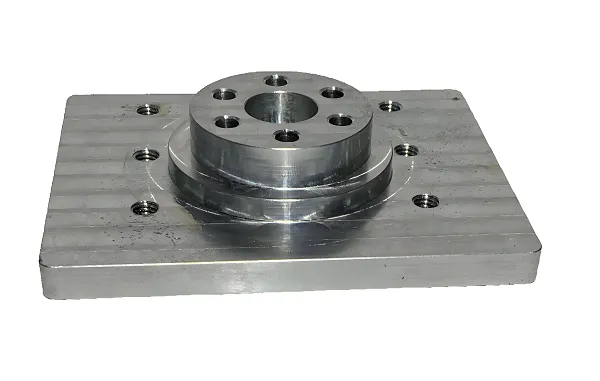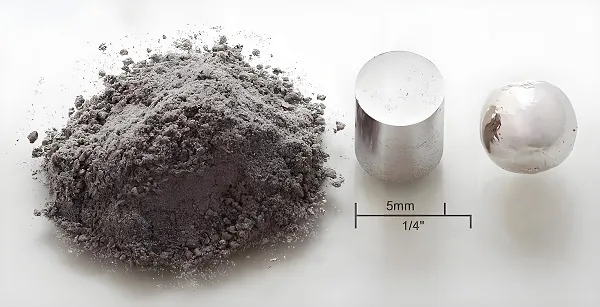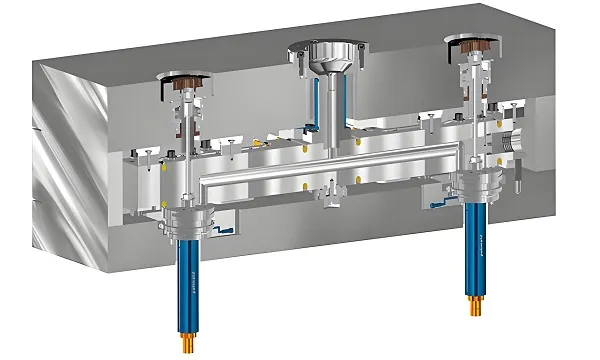Custom stainless steel pipeline components—including tees, U-clamps, elbows, and ball valves—are precision-engineered fittings for fluid control systems. These tailored parts ensure leak-free connections, directional flow management, and secure installations in industrial piping networks, with customizable dimensions and materials to meet specific pressure, temperature, and media requirements.
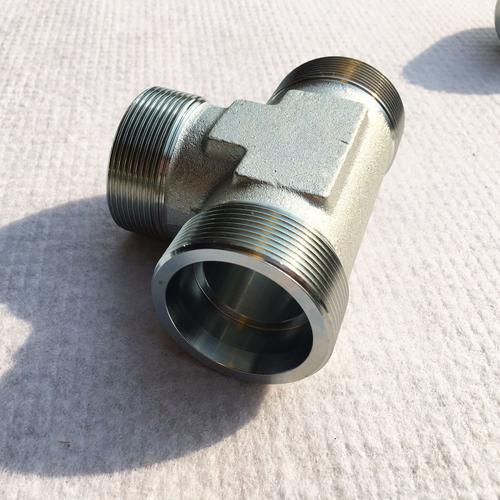
Applications, Common Sizes & Product Features
Typical Applications
Essential in chemical processing, food & beverage production, pharmaceutical manufacturing, water treatment, and oil & gas industries. Used to redirect fluid flow (tees/elbows), control flow on/off (ball valves), and secure pipe connections (U-clamps) in systems handling liquids, gases, and corrosive media. Critical for hygienic, high-pressure, or high-temperature applications.
Common Specifications
- Tees: DN15-DN300 (1/2″-12″); wall thickness SCH10-SCH160; branch angle 90°/45°; connection types (threaded, flange, butt-weld).
- U-Clamps: Pipe diameter range 10mm-200mm; clamp width 20mm-80mm; bolt size M8-M20; load capacity 500N-5000N.
- Elbows: DN15-DN300; 45°/90°/180° angles; radius (short radius = 1D, long radius = 1.5D); wall thickness SCH10-SCH160.
- Ball Valves: DN15-DN200; pressure rating PN16-PN40; port size (full bore/reduced bore); operation (manual/actuated).
Key Product Features
- Corrosion Resistance: 304/316 stainless steel construction resists rust and chemical attack, suitable for pH 2-12 media at 20°C.
- High Pressure Tolerance: Withstands working pressures up to 4.0MPa (PN40) at ambient temperature; 316 variants handle up to 3.0MPa at 200°C.
- Hygienic Design: Smooth internal surfaces (Ra ≤0.8μm) for sanitary applications, preventing bacterial growth and facilitating cleaning.
- Leak-Free Performance: Precision machined sealing surfaces and gaskets (PTFE/EPDM) achieve bubble-tight shutoff (≤0.1 std cm³/min).
- Long Service Life: 100,000+ operation cycles for ball valves; 20+ year service life in standard conditions with proper maintenance.
Alternative Processable Materials & Their Features
- Carbon Steel (A105): Cost-effective for non-corrosive applications; high strength (tensile strength 485MPa) but prone to rust. Suitable for low-cost industrial water or air systems.
- Alloy Steel (F22): High temperature resistance (up to 550°C) and creep strength; ideal for high-pressure steam systems in power plants.
- Duplex Stainless Steel (2205): Superior strength (yield strength 450MPa) and corrosion resistance vs. 316; handles chloride environments (up to 20,000ppm Cl⁻) better than austenitic grades.
- Brass (C36000): Excellent machinability and moderate corrosion resistance; used for low-pressure (≤1.6MPa) potable water or gas systems.
- Hastelloy C276: Extreme corrosion resistance in aggressive media (acids, chlorine); operates at -270°C to 450°C but 5-8x cost of 316 stainless.
Manufacturing Process
- Material Preparation: Cut stainless steel bars/tubes to size using plasma cutting or band saws; verify material certification (3.1B test reports).
- Forming & Machining:
- Tees/Elbows: Hot forming (for DN50+) at 1050-1150°C or cold forming (for DN≤40); CNC machining for precise dimensions.
- U-Clamps: Stamping/bending from sheet metal; CNC drilling for bolt holes; surface finishing.
- Ball Valves: CNC turning for valve body/bonnet; ball grinding to Ra 0.4μm; stem machining with precision threads.
- Welding (if applicable): TIG welding for butt-weld connections with argon purging to prevent oxidation; post-weld heat treatment for stress relief.
- Surface Treatment: Passivation (nitric acid bath) to enhance corrosion resistance; electropolishing for hygienic applications (Ra ≤0.4μm).
- Assembly: Install seals, stems, and actuators (for valves); torque bolts to specified values (25-80N·m depending on size).
- Testing: Pressure testing (1.5x rated pressure for 30min); leakage testing; dimensional inspection with CMM.
Manufacturing Challenges
- Weld Quality Control: Ensuring defect-free welds in tees/elbows requires precise heat input control—excessive heat causes grain growth and reduced corrosion resistance. 100% radiography testing for critical applications.
- Dimensional Precision in Valves: Maintaining ball-to-seat clearance (0.02-0.05mm) demands ultra-precise grinding; even 0.1mm deviation causes leakage or excessive torque.
- Corrosion Resistance after Machining: Machining can break the passive chromium oxide layer; requires strict passivation processes (20-30% nitric acid, 30-60min) to restore protection.
- Large-Diameter Forming: Elbows/tees over DN200 are prone to wall thickness variation during hot forming; requires computer-controlled press forming and post-forming thickness checks.
- Hygienic Surface Finish: Achieving Ra ≤0.8μm on internal surfaces requires specialized grinding/polishing tools and strict process validation.
Customization Process
- Requirement Analysis: Customers provide system parameters (pressure, temperature, media), connection type, dimensions, and standards (ASME, DIN, GB).
- Engineering Design: 3D modeling (AutoCAD/SolidWorks) and FEA simulation for structural integrity; material recommendation within 2 working days.
- Prototype Production: Manufacture 1-3 samples using CNC machining/welding; include material test reports and dimensional inspection. Delivery in 7-10 days.
- Testing & Validation: Pressure testing, leakage testing, and (if required) corrosion testing (salt spray test: 500+ hours for 316); adjust design based on results.
- Mass Production: Full production with batch testing (10% sampling for pressure testing); lead time 15-30 days depending on quantity and complexity.
Common Questions
-
Q: Why is my stainless steel fitting rusting prematurely?
A: Likely causes: wrong grade (304 instead of 316 for chloride environments), damaged passive layer from machining/welding, or exposure to high (>12) pH media. Check material certification and ensure proper passivation. -
Q: What’s the difference between full bore and reduced bore ball valves?
A: Full bore valves have same inner diameter as pipe (minimal pressure drop), while reduced bore has smaller ball (lower cost but 10-15% higher pressure drop). Choose full bore for viscous media or high flow rates. -
Q: Can these components be used with food-grade applications?
A: Yes—specify 316 stainless steel with electropolished surfaces (Ra ≤0.8μm) and EPDM/FKM gaskets compliant with FDA 21 CFR 177.2600. -
Q: How to select between threaded, flange, and weld connections?
A: Threaded for DN≤50, low pressure; flanged for easy maintenance in DN50-DN200; weld for high pressure/temperature or hygienic applications (no crevices for bacteria).
Need custom stainless steel pipeline components that fit perfectly and perform reliably? Goldcattle specializes in tailored tees, U-clamps, elbows, and ball valves for your fluid system. Our 304/316 stainless components deliver leak-free performance (≤0.1 std cm³/min leakage), corrosion resistance, and PN16-PN40 pressure ratings. From DN15 to DN300, threaded to weld connections, we meet ASME/DIN/GB standards. Have a specific dimension, media type, or pressure requirement? Leave us a message via our contact form with your specifications, and our engineers will respond within 24 hours with a personalized solution. Visit https://www.xmgoldcattle.com/ to start your custom pipeline components project today!

